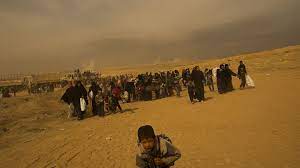Introduction: Climate change has become an undeniable reality, with its effects reverberating throughout the world. Beyond the obvious changes in weather patterns, rising sea levels, and extreme weather events, there are hidden consequences that often go unnoticed. These hidden impacts of climate change are not only affecting our environment but also jeopardizing our health, economies, and ecosystems. In this blog, we will explore some of the lesser-known effects of climate change and shed light on the urgent need for global action. Hidden Impact 1: Health Crisis As temperatures rise and weather patterns become more unpredictable, public health is increasingly at risk. Heatwaves, intensified by climate change, can lead to heat-related illnesses and fatalities. Moreover, changing climate conditions create favorable environments for the spread of infectious diseases such as malaria, dengue fever, and Lyme disease. The consequences of climate change on human health are often overshadowed ...
INTRODUCTION Dams are built for a variety of reasons, including flood control, irrigation, and hydroelectric power generation. With climate change and variable weather patterns, the construction of dams to store water for later use has become essential. The construction of dams has been a major problem in Pakistan for decades. No major dam has been built in Pakistan since 1984. Due to this Pakistan has always seen destruction after floods. And no way to save a large amount of water. But now a few years ago Pakistan is showing more concern and taking steps to build big dams. Now Pakistan is working on the construction of seven big dams. Which are: Kurram Tangi Dam KPK 2016 Dasu Dam KPK 2020 Mohmand Dam KPK 2019 Kalam Dam KPK – Othla Dam KPK – Jabba Dam KPK – Jalozai Dam KPK – Dadocha Dam Punjab – Nai Gaj Dam...





Comments
Post a Comment